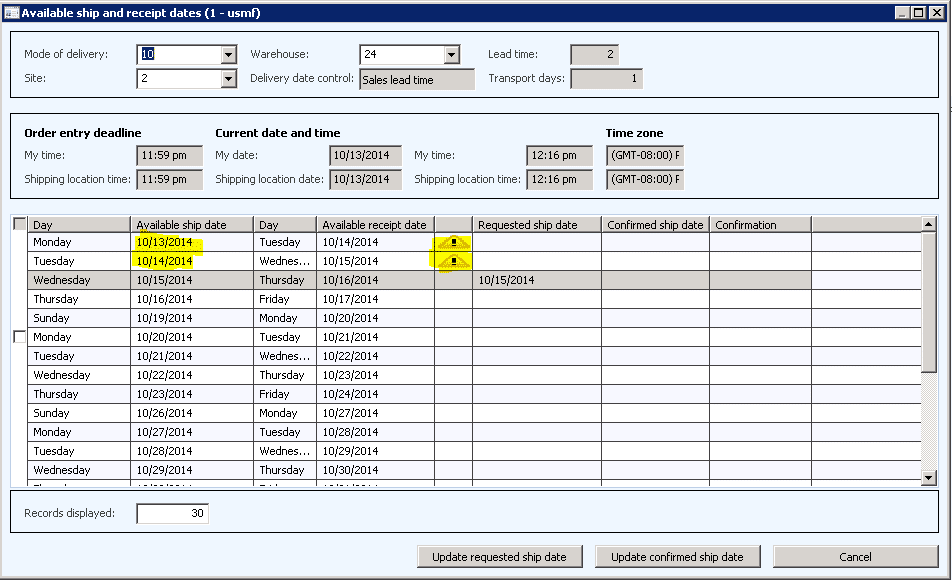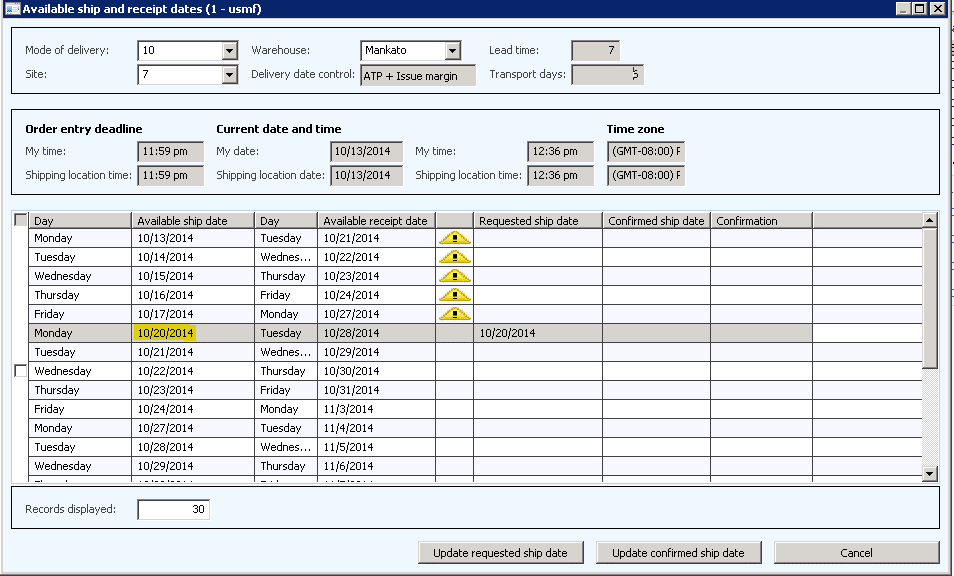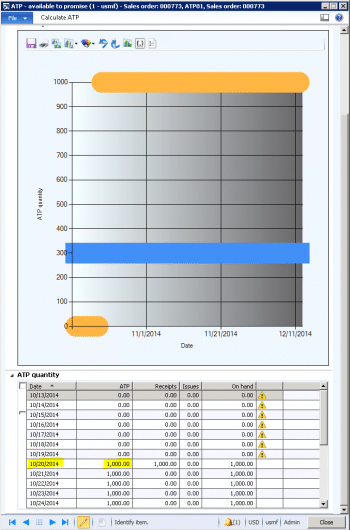Sales Lead Time vs. ATP vs. CTP in AX 2012
What the heck are SLT, ATP & CTP in AX 2012 and what are the differences?
There’s a piece of functionality called delivery date control inside of Dynamics AX which will propose from today’s date, when the warehouse can have product ready and shipped. Then once shipped, how long it will take to be delivered to a customer location.
There are three main methods of delivery date control:
- Sales Lead Time (SLT)
- Available-to-promise (ATP)
- Capable-to-promise (CTP)
I’ve done some research lately on this area and here is a high level on what I found out about these 3 delivery date control methods. Enjoy!
Sales Lead Time: SLT is how long, once the order is entered, for the product to be placed on a shipment. So in AX you can set static values in multiple areas to set a default lead time.
Here is where you can setup sales lead time and the order in which AX checks it:
- Trade Agreements: AR > Journals > Price/Discount > Price/Discount agreement journals.
- Site Specific Order Settings: Released Product Form > Action Menu > Plan Tab > Site Specific Order Settings.
- Default Order Settings: Released Product Form > Action Menu > Plan Tab > Default Order Settings.
Note: You setup the default sales lead time under: Accounts Received Parameters: AR > Setup > AR Parameters > Shipments tab.
Example: The Sales Lead Time is set to 2 days for product XYZ. If an order was entered on 10/13/2014 it would block off two work days for the requested ship date.
Figure 1: Delivery Date Control
You will also notice that there is a field called “Transportation Days”. This field is added to calculation to let the customer service rep know how many days to add to the available ship date to get an available receipt date. So for instance in the previous example it only takes one day to get to the customer location so if the order is place on the 10/13/2014 it will be to the customer location on the 10/16/2014.
You can setup transportation days by going to: Inventory Management > Setup > Distribution > Transport.
NOTE: In some instances the time of day you enter an order on affects the lead time calculations. So for instance you can set the system up so if an order is entered on 10/13/2014 after 3 PM the 2 day lead time would actually be 3 days because it would propose 10/16/2014 as the Available Ship Date.
Summary: The Sales Lead Time will use a static value to calculated how long it takes for a product to be on a shipment (Available Ship Date) and then uses the sales lead time + transportation calendar to calculate the estimated delivery date (available receipt date).
Available-to-Promise (ATP): ATP is the amount of product that you can promise a customer based on a time fence inside of AX. The system uses a time fence, which is how many days it should look into the future among a few other settings, to see how many receipts are available and when, pertaining to the order you are entering. So for example, if there are zero on-hand for product XYZ (60 day time fence) and there is a purchase order that is expected to be delivered in 7 days, ATP would calculate the following, assuming we entered the order on 10/13/2014:
Available Ship Date: 10/20/2014 (Monday). 7 total days to get the product in-stock and on a shipment.
Available Receipt Date: 10/28/2014 – 6 “work” days for transportation.
Figure 2: Delivery Date Control
A misconception with ATP is that MRP is required for use. That isn’t true, you can use ATP by without the use of MRP.
ATP also has a nice view that you can use to see what has been ordered compared to what and when product will be available.
Below there are 300 on order and on 10/20/2014 there is an expected receipt for 1000. So this view is letting you know on 10/20/2014 you could promise the full 300.
Figure 3: ATP View from a sales line
NOTE: To display the ATP view you simply select a sales order line and select the Product and Supply button > ATP Information.
Summary: ATP is a good way to use current issues and receipts to calculate how much you can promise to customers on specific dates.
Capable-To-Promise (CTP): CTP is a manufacturing oriented delivery date control approach. The system will take the route time into account when calculating how long it will take to manufacture the products that have been ordered. So for example, you have a route that takes 24 total hours to manufacture 1 piece on a standard 8 hour work day. If a quantity of 1 goes on order, it will show the lead time to be 3 days.
NOTE: If you setup a non-manufactured product as CTP controlled, the system looks to default back to the sales lead time as CTP is not applicable.
I found a nice blog on setting up CTP if you would like further reference: http://fahd-alam.blogspot.com/2013/08/capable-to-promise-ctp-in-ax-2012.html
Under the terms of this license, you are authorized to share and redistribute the content across various mediums, subject to adherence to the specified conditions: you must provide proper attribution to Stoneridge as the original creator in a manner that does not imply their endorsement of your use, the material is to be utilized solely for non-commercial purposes, and alterations, modifications, or derivative works based on the original material are strictly prohibited.
Responsibility rests with the licensee to ensure that their use of the material does not violate any other rights.







